Segmented Email Campaigns
Segment Your Email Campaigns: Vital New Stats

Did you know that dividing your email campaigns into segments can increase your email open rates by up to 203%? By targeting your audience with tailored content, you can improve engagement and conversion rates. In a world where people are bombarded with emails daily, standing out is crucial. Email segmentation allows you to personalize your messages and ensure they resonate with your audience’s preferences and needs.
In this article, we will explore the vital new statistics that highlight the importance of segmenting your email campaigns. We’ll delve into the benefits of email segmentation and provide practical strategies on how to effectively implement segmentation techniques. Whether you’re a small business owner or a marketing professional, understanding the power of email segmentation is essential for running successful email marketing campaigns.

Key Takeaways:
- Email segmentation can increase email open rates by up to 203%.
- Segmented campaigns can lead to a 760% increase in revenue
- Segmenting your email campaigns allows for personalized and targeted content delivery.
- Effective email segmentation enhances engagement and conversions.
- Understanding your subscribers’ interests and needs is crucial for successful segmentation.
- Segmentation criteria can include demographics, customer behavior, and engagement with previous emails
- Implementing segmentation strategies can lead to higher ROI for your email marketing efforts.
What are the benefits of email segmentation?
Email segmentation offers several benefits that can significantly improve the performance of your email campaigns. By sending targeted emails to specific segments of your audience, you can increase the open rate and click-through rate of your emails. Personalization and relevance are also enhanced when you tailor your content to each segment, leading to higher conversion rates. Additionally, segmenting your email list can help reduce unsubscribe rates as subscribers receive content that is more aligned with their interests. Ultimately, these benefits contribute to an enhanced return on investment (ROI) for your email marketing efforts.
Increased open rate and click-through rate
By segmenting your email list and delivering targeted content, you can capture the attention of your subscribers more effectively. This leads to increased open rates as subscribers are more likely to engage with emails that are relevant to their needs and preferences. Furthermore, higher click-through rates can be achieved when you provide personalized and enticing content to each segment.
Improved personalization and relevance
Email segmentation allows you to deliver content that is tailored to the specific interests and preferences of each segment. This level of personalization enhances the relevance of your emails, making them more impactful and engaging for your subscribers. By providing content that resonates with their needs, you can foster a stronger connection and increase their loyalty and engagement.
Higher conversion rates
Segmented email campaigns have been proven to generate higher conversion rates compared to generic email blasts. By delivering targeted content to specific segments, you are able to address their pain points, showcase relevant solutions, and drive them towards taking desired actions. This personalized approach increases the likelihood of converting subscribers into customers, resulting in higher conversion rates and improved ROI.
Reduced unsubscribe rates
When you segment your email list and deliver content that is aligned with the interests of each segment, subscribers are less likely to unsubscribe. By providing them with valuable and relevant information, you can nurture their engagement and maintain their interest over time. This helps to reduce unsubscribe rates and retain a larger, more engaged audience.
Enhanced ROI
Email segmentation allows you to optimize your email marketing campaigns and achieve a higher return on investment. By tailoring your content to specific segments, you can generate more conversions, increase customer loyalty, and drive revenue growth. The targeted nature of segmented campaigns ensures that your resources are invested in reaching the most receptive audience, maximizing the overall effectiveness and ROI of your email marketing efforts.
Benefits of Email Segmentation Increased open rate Higher click-through rate Improved personalization and relevance Higher conversion rates Reduced unsubscribe rates Enhanced ROI
How to effectively segment your email list?
In this section, we will discuss effective strategies for segmenting your email list. One key approach is to segment your list based on subscriber behavior. By analyzing how subscribers interact with your emails, such as open rates, click-through rates, and past purchase behavior, you can create segments that cater to their specific interests and preferences. This allows you to send targeted emails that are more likely to resonate with each segment, leading to better engagement and conversions.

To segment based on subscriber behavior, you can gather data from your email marketing platform and analyze key metrics. Here are some steps to consider:
- Identify key engagement indicators: Look for indicators of subscriber behavior, such as open rates, click-through rates, and the frequency of interaction with your emails.
- Create segments based on engagement levels: Divide your email list into segments based on subscribers’ engagement level. This can include active, moderately engaged, and inactive segments.
- Utilize past purchase behavior: If you have an e-commerce business, consider segmenting your list based on past purchase behavior. This can include segmenting customers who have made recent purchases, high-value customers, or customers who have not made a purchase in a certain time frame.
- Personalize content for each segment: Once you have identified your segments, customize your email content to cater to the specific interests and preferences of each segment. This can include offering tailored product recommendations or providing exclusive discounts based on past purchase behavior.
Segmenting your email list based on subscriber behavior can significantly improve the effectiveness of your email campaigns. By sending targeted and relevant content to each segment, you can maximize engagement, increase conversions, and ultimately drive better results from your email marketing efforts.

Use demographic segmentation
Demographic segmentation is a highly effective strategy for segmenting your email list. By categorizing your subscribers based on factors such as age, location, or income, you can deliver more personalized content that aligns with their specific demographic characteristics. This targeted approach helps to increase engagement and conversion rates by providing subscribers with relevant and meaningful content.

Implementing demographic segmentation allows you to create segments that resonate with different demographic groups within your audience. By understanding their unique preferences and needs, you can tailor your email campaigns to appeal to each segment. This level of personalization enhances the customer experience and increases the likelihood of conversions.
For example, you can create a segment for subscribers in a specific age range to promote age-related products or services. Alternatively, you can target subscribers in certain locations with localized promotions or events. By leveraging demographic segmentation, you can make a deeper connection with your audience and foster stronger brand loyalty.
Implement segmentation based on engagement levels
Segmenting your email list based on engagement levels is another effective strategy to optimize your email campaigns. By dividing your subscribers into active and inactive groups, you can tailor your messaging to re-engage inactive subscribers and nurture active ones.
For inactive subscribers, you can create a specific segment and design re-engagement campaigns to win them back. These campaigns can include enticing offers, personalized content, or reminders of the value they’ll receive by staying subscribed. By focusing on re-engagement, you can revitalize your relationship with inactive subscribers and potentially convert them into active customers once again.
Active subscribers, on the other hand, can be segmented based on their level of engagement. This allows you to send targeted emails that recognize their existing interaction with your brand. Whether it’s rewarding loyal customers with exclusive offers or providing additional resources to avid readers, segmenting based on engagement levels allows you to nurture these valuable relationships and increase overall engagement.
Create segments according to past purchase history
Segmenting your email list based on past purchase history enables you to leverage customer buying behavior to deliver more relevant and personalized content. By analyzing the purchase patterns of your subscribers, you can create segments that align with their specific interests and preferences.
For example, if you have an online clothing store, you can create segments based on the type of clothing or accessories that customers have purchased in the past. This allows you to send targeted emails showcasing new arrivals or promotions for similar products. By tailoring your emails to each customer’s past purchase history, you can increase the likelihood of them making repeat purchases and foster customer loyalty.
Segmenting based on purchase history also enables you to provide personalized product recommendations, cross-selling opportunities, and customized offers that align with each customer’s preferences. This level of personalization enhances the customer experience and can significantly impact your bottom line.
Utilize list segmentation for inactive subscribers
List segmentation specifically for inactive subscribers allows you to craft targeted email campaigns to re-engage them. By identifying subscribers who have shown little to no engagement with your emails, you can implement a list segmentation strategy to recapture their interest and encourage them to become active again.
When segmenting inactive subscribers, it’s essential to understand the reasons behind their inactivity. By analyzing their interaction with your emails, you can gain insights into their preferences or pain points that may have led to their disengagement. Utilize this information to create segments with tailored messages, offers, or incentives that resonate with their specific needs.
Re-engagement campaigns targeted at inactive subscribers can include exclusive discounts, reminders of the benefits they’ll receive by staying subscribed, or updates on new features or improvements. Implementing list segmentation for inactive subscribers allows you to optimize your email marketing efforts, increase the chances of re-engagement, and prevent valuable subscribers from slipping away.

What are the key email marketing statistics related to segmentation?
In this section, we will explore the latest email marketing statistics highlighting segmentation’s impact and benefits in email campaigns. Segmentation is crucial in enhancing the effectiveness and ROI of your email marketing efforts. Let’s delve into the key statistics and insights that demonstrate the power of segmentation.
Impact of segmentation on email marketing campaigns
Segmentation has a profound impact on email marketing campaigns, improving various performance metrics and driving better engagement. Consider the following statistics:
- Segmented campaigns have been observed to generate 760% increase in email revenue.
- Email open rates improve by an average of 14.32% when utilizing segmented lists.
- Click-through rates soar to 100.95% higher for segmented campaigns compared to non-segmented ones.
- List segmentation contributes to a 39% higher email open rate and a 28% lower unsubscribe rate.
Segmentation strategies for higher conversion rates
Implementing effective segmentation strategies can significantly boost conversion rates and overall campaign performance. Consider the following strategies:
- Behavioral segmentation: Tailoring emails based on subscriber behavior and preferences can lead to a 76% increase in email revenue.
- Demographic segmentation: Customizing emails according to demographic characteristics, such as age, location, or income, can result in a 29% increase in email open rates.
- Purchase history segmentation: Segmenting lists based on past purchase behavior can generate a 122% increase in revenue per email.
- Inactivity segmentation: Re-engaging inactive subscribers through targeted campaigns can lead to a 33% increase in click-through rates.
Email marketing metrics influenced by segmentation
Segmentation plays a vital role in shaping various email marketing metrics, offering insights into the effectiveness and performance of your campaigns. Consider the following metrics:
- Deliverability: Segmented campaigns achieve 14.31% higher deliverability rates compared to non-segmented ones.
- Engagement: Segmented emails generate a 233% higher engagement rate compared to non-segmented ones.
- ROI: Businesses experience an average return on investment of $42 for every $1 spent on email marketing, thanks to effective segmentation.
Case studies demonstrating the power of list segmentation
“By segmenting our email list and personalizing our content, we saw a 98% increase in email revenue within three months.” – Company A
“Implementing behavioral segmentation helped us achieve a 60% higher click-through rate and a 40% increase in conversion rates.” – Company B
These case studies demonstrate the tangible benefits and success achieved through list segmentation. By utilizing targeted segmentation strategies, businesses have witnessed significant improvements in key metrics and revenue generation.
Projected email segmentation trends for 2024
As we look ahead to the future, certain trends are expected to shape the landscape of email segmentation in 2024. These trends include:
- AI-powered segmentation: Artificial intelligence will play a larger role in automating and optimizing segmentation processes for more accurate targeting and personalization.
- Micro-segmentation: Marketers will focus on creating even smaller and more granular segments to maximize relevance and engagement.
- Dynamic segmentation: Real-time data and user behavior will be utilized to dynamically adjust segment criteria and deliver personalized content.
These projected trends highlight the evolving nature of email segmentation and its continued importance in driving successful email marketing campaigns in the years to come.
The Impact of Email Segmentation
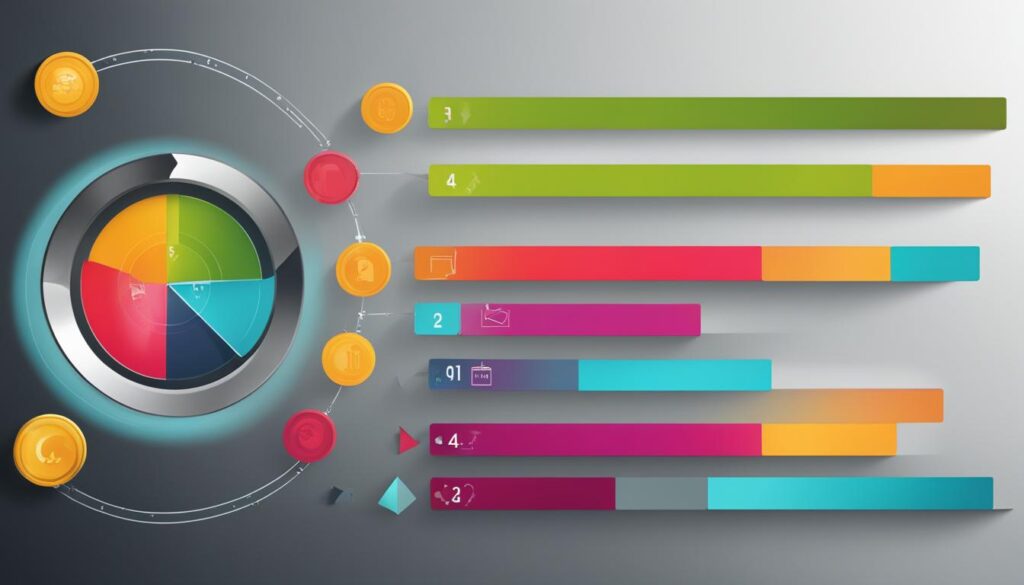
| Email Marketing Statistics | Statistics |
|---|---|
| Increased Email Revenue | 760% increase in revenue with segmented campaigns. |
| Higher Open Rates | 14.32% increase in open rates with segmented lists. |
| Improved Click-Through Rates | 100.95% higher click-through rates for segmented campaigns. |
| Lower Unsubscribe Rates | 28% lower unsubscribe rate with list segmentation. |
| Customized Content | 76% increase in revenue with behavioral segmentation. |
| Targeted Demographics | 29% increase in open rates with demographic segmentation. |
| Personalized Offers | 122% increase in revenue per email with purchase history segmentation. |
| Re-Engagement Success | 33% increase in click-through rates with inactivity segmentation. |
| Higher Deliverability | 14.31% higher deliverability rates with segmented campaigns. |
| Enhanced Engagement | 233% higher engagement rates with segmented emails. |
| Impressive ROI | Average $42 return on investment for every $1 spent on email marketing. |
Why is segmentation crucial for successful email marketing campaigns?
In order to achieve success in email marketing campaigns, segmentation plays a critical role. By effectively segmenting your email list, you can enhance targeting and personalization, ensuring that your emails are relevant to each subscriber. This leads to improved email content relevance and increases the chances of engagement and interaction with your emails. Furthermore, segmentation contributes to the increased longevity and loyalty of subscribers, as they receive content tailored to their interests. Additionally, segmentation enables optimized automation and drip campaigns, allowing for more personalized and timely communication with your audience.
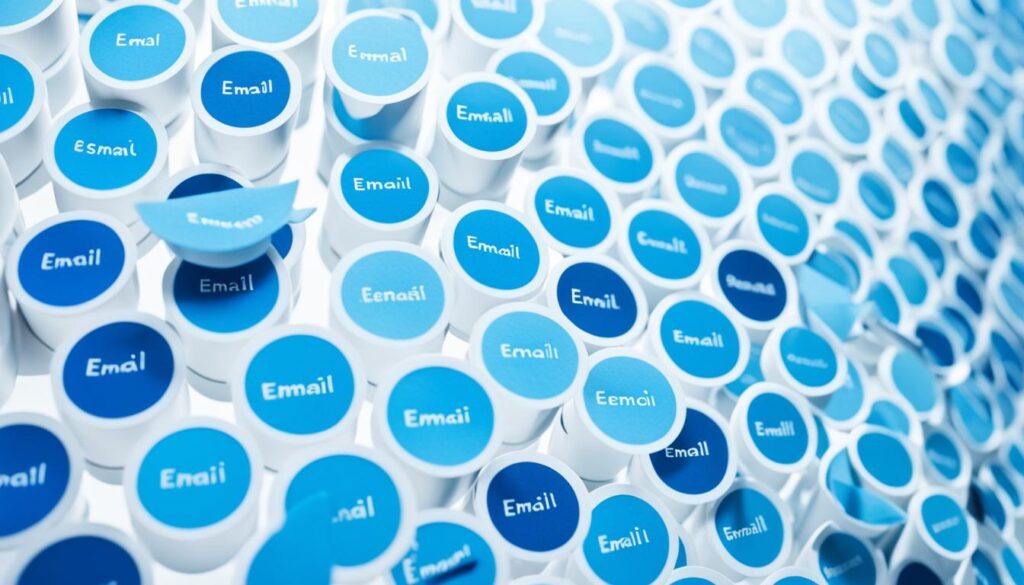
| Benefits of Segmentation |
|---|
| Enhanced Targeting |
| Personalization |
| Improved Content Relevance |
| Maximized Engagement and Interaction |
| Increased Longevity and Loyalty of Subscribers |
| Optimized Automation and Drip Campaigns |
What are the best practices for implementing email segmentation strategies?
In order to maximize the effectiveness of email segmentation, it is important to follow best practices that ensure targeted and personalized communication with your subscribers. Implementing these strategies will help you deliver highly relevant content and optimize your email marketing campaigns. Let’s explore the key best practices for email segmentation:
Create Custom Segments Based on Unique Subscriber Attributes
One of the fundamental best practices for email segmentation is to create custom segments based on unique subscriber attributes. By collecting and analyzing data such as demographic information, past purchase behavior, and engagement levels, you can categorize your subscribers into specific groups. This allows you to tailor your email content and offers to each segment’s preferences and needs. For example, you can create segments based on age, location, or industry, or even customize your segments based on specific product preferences or interests.
Utilize Dynamic Content for Personalized Email Campaigns
Dynamic content is a powerful tool that enables you to personalize your email campaigns based on the unique characteristics and preferences of your subscribers. By utilizing dynamic content, you can serve different variations of your email content to different segments of your audience. Whether it’s showcasing specific product recommendations, personalized offers, or localized content, dynamic content helps create a hyper-relevant and engaging email experience.

Test and Refine Segment Criteria for Continuous Enhancement
Segmentation is an ongoing process that requires continuous testing and refinement. It’s essential to analyze the performance of your segments and optimize their criteria based on key metrics such as open rates, click-through rates, and conversions. By regularly testing and refining segment criteria, you can ensure that you are targeting the right audience with the most relevant content. This iterative approach helps you improve the effectiveness of your segments over time.
Integrate Segmentation with Marketing Automation Tools
Integrating your email segmentation strategy with marketing automation tools can significantly streamline your efforts. Marketing automation platforms allow you to automate the segmentation process, ensuring that your subscribers are dynamically placed into the appropriate segments based on their behavior and attributes. This integration also enables you to trigger personalized email campaigns and automated workflows based on specific segment criteria, resulting in more efficient and effective email marketing.
Leverage Segmentation for Effective Re-engagement Campaigns
Segmentation plays a crucial role in re-engaging inactive subscribers. By creating segments specifically for inactive users, you can design targeted re-engagement campaigns to win them back. Customize your re-engagement emails based on their previous interactions with your brand or offer exclusive promotions to incentivize their return. Leveraging segmentation for re-engagement campaigns helps reignite interest and encourages subscribers to become active and engaged once again.
Implementing these best practices will enable you to harness the power of email segmentation and create impactful, personalized, and targeted campaigns. By continuously refining your segments, utilizing dynamic content, integrating with marketing automation tools, and leveraging segmentation for re-engagement, you can optimize your email marketing strategy and drive better results.
Conclusion
Segmenting your email campaigns is essential for achieving success in email marketing. The new statistics presented in this article clearly highlight the importance and numerous benefits of email segmentation. By dividing your email list into smaller, targeted segments based on subscriber behavior, demographic data, engagement levels, and purchase history, you can deliver personalized and relevant content to your subscribers.
Implementing the best practices for email segmentation ensures that your campaigns are more targeted, engaging, and effective. Not only does segmentation result in increased open rates, click-through rates, and conversion rates, it also helps reduce unsubscribe rates and enhances your overall return on investment (ROI). By leveraging the power of segmentation, you can optimize your email marketing strategies and achieve better results.
Segmenting your email campaigns allows you to deliver content that resonates with your audience, making them more likely to engage with your emails. It enables you to create custom segments based on unique subscriber attributes, utilize dynamic content for personalized email campaigns, and test and refine segment criteria to continuously improve your strategy. Additionally, integrating segmentation with marketing automation tools streamlines your efforts and enables more efficient campaign management.
In conclusion, adopting email segmentation as part of your email marketing strategy is crucial for maximizing the effectiveness of your campaigns. By segmenting your email list and tailoring your content to specific audience segments, you can create more targeted and personalized communication that drives engagement, conversions, and long-term loyalty from your subscribers.
FAQ
What are the benefits of email segmentation?
Email segmentation offers several benefits, including increased open rates and click-through rates, improved personalization and relevance, higher conversion rates, reduced unsubscribe rates, and enhanced ROI.
How to effectively segment your email list?
You can segment your email list based on subscriber behavior, such as open rates, click-through rates, and past purchase behavior. This helps you create targeted segments that cater to specific interests and preferences.
How to use demographic segmentation?
Demographic segmentation involves categorizing subscribers based on factors like age, location, or income. This allows you to deliver more personalized content based on their unique demographic characteristics.
How to segment based on engagement levels?
By dividing your subscribers into active and inactive groups, you can target each segment with appropriate messaging to re-engage inactive subscribers or nurture active ones.
How to create segments based on past purchase history?
Segmenting your list based on past purchase behavior enables you to tailor your emails to each customer’s buying habits, ensuring that they receive relevant content related to their previous purchases.
How to utilize list segmentation for inactive subscribers?
List segmentation can be used specifically for inactive subscribers to craft re-engagement or win-back campaigns, helping to revive their interest and increase engagement.
What are the key email marketing statistics related to segmentation?
Key statistics include the impact of segmentation on email marketing campaigns, strategies for higher conversion rates, metrics influenced by segmentation, case studies demonstrating the power of list segmentation, and projected trends for 2024.
Why is segmentation crucial for successful email marketing campaigns?
Segmentation is crucial because it enables enhanced targeting and personalization, improved email content relevance, maximized engagement and interaction, increased longevity and loyalty of subscribers, and optimized automation and drip campaigns.
What are the best practices for implementing email segmentation strategies?
Best practices include creating custom segments based on unique subscriber attributes, utilizing dynamic content for personalized email campaigns, testing and refining segment criteria for continuous enhancement, integrating segmentation with marketing automation tools, and leveraging segmentation for effective re-engagement campaigns.
Natali – Editor in Chief (Strategy and Mastery, AI Expert) Natali, our Editor in Chief, is the driving force behind our content’s strategic direction. With a keen eye for detail and a deep understanding of market trends, Natali ensures that our content is top-notch and strategically aligned with our client’s goals. Her expertise in AI helps to seamlessly integrate advanced technology into our marketing strategies, pushing the boundaries of conventional marketing.
Segmented Email Campaigns
10 Best Advantages of Customer Segmentation Email Marketing
Keen to discover the 10 best advantages of customer segmentation in email marketing? Get ready to revolutionize your email campaigns with these game-changing benefits.

We have all heard the saying that there is value in your email list, and when it comes to email marketing, segmenting your customer base into different groups can make a huge difference.
Did you know that segmented email campaigns can drive a 760% increase in revenue? The benefits of customer segmentation in email marketing are numerous, ranging from improved open rates and customer engagement to personalized content delivery and higher conversion rates.
But what are the other advantages that make it a game-changer for businesses looking to enhance their email marketing efforts?
Key Takeaways
- Segmented email campaigns drive significantly higher revenue and open rates compared to non-segmented ones.
- Personalized and targeted content leads to higher engagement, lower unsubscribe rates, and stronger connections with subscribers.
- Email segmentation fosters enhanced customer engagement, loyalty, and long-term relationships.
- Segmentation enables better understanding of customer behavior, leading to more effective targeting and improved campaign performance.
Improved Email Open Rates
By segmenting our email campaigns, we consistently achieve a significant increase in open rates, driving higher engagement and conversions among our target audience.
Our segmentation strategy has led to improved email open rates, as evidenced by data showing that segmented emails have 14.32% higher open rates than non-segmented ones. This demonstrates the power of targeted emails in capturing the attention of our recipients.
By tailoring our content to specific demographics or individuals, we create a more personalized experience, making it more likely for our emails to be opened. Through targeted email campaigns, we've observed a 28% increase in opportunities for clicks on our content, indicating that segmentation not only boosts open rates but also encourages interaction with our brand.
The relevance of our content, made possible through email segmentation, has been instrumental in increasing the chances of converting subscribers into customers. In contrast, generic emails often result in more unsubscribes, highlighting the importance of delivering tailored and personalized content to meet individual needs.
Enhanced Customer Engagement

Enhanced customer engagement through email segmentation results in a more personalized and relevant experience for our audience, driving higher interaction and satisfaction with our email campaigns.
By leveraging customer segmentation in our email marketing strategy, we can tailor content to specific audience interests and needs, leading to higher open and click-through rates. Understanding customer behavior and preferences allows us to craft targeted and compelling messages, effectively capturing the attention of our audience and driving increased engagement.
The delivery of timely and valuable content, made possible through email segmentation, fosters enhanced customer engagement and satisfaction. This approach not only improves the performance of our email campaigns but also nurtures customer loyalty and long-term relationships with our brand.
With customer segmentation, we can create meaningful connections with our audience, positioning our brand as attentive and responsive to their individual needs and preferences. As a result, we can expect to see a significant uplift in customer engagement and overall campaign effectiveness.
Personalized Content Delivery
Utilizing personalized content delivery based on segmentation enhances the effectiveness of email marketing campaigns by tailoring messages to specific segments of the audience, thereby increasing relevance and engagement. This targeted approach allows for the creation of personalized emails that cater to the specific needs and interests of different customer segments.
Here's why personalized content delivery is crucial for successful email marketing:
- Higher Engagement: Segmented emails with personalized content have higher open and click-through rates, leading to better campaign performance.
- Targeted Promotions: By delivering personalized content, you can effectively target promotions to different segments based on their interests and behaviors.
- Improved Customer Experience: Personalized content delivery improves the overall customer experience by providing tailored content that meets subscribers' specific needs and interests.
- Enhanced Monitoring: Utilizing personalized content delivery based on segmentation helps in monitoring subscribers' behavior and engagement, contributing to improved campaign efficiency.
In essence, personalized content delivery based on segmentation is a vital strategy for connecting with targeted customers, driving higher engagement, and ultimately achieving better results in email marketing campaigns.
Higher Conversion Rates
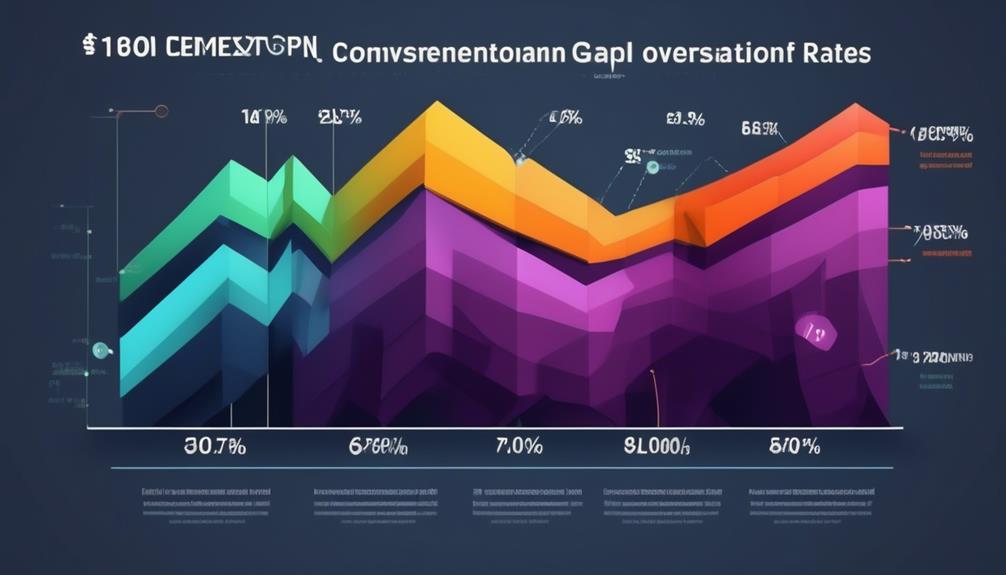
By focusing on increased personalization, targeted communication, and improved engagement, segmentation in email marketing drives higher conversion rates.
Targeted email campaigns, resulting from segmentation, lead to higher open rates, clicks, and conversions, ultimately contributing to higher conversion rates.
Tailoring subject lines to specific demographics or individuals as a result of segmentation increases the likelihood of email opens and engagement, leading to higher conversion rates.
Increased Personalization
When it comes to increasing conversion rates in email marketing, personalized content tailored to segmented audiences plays a crucial role. Increased personalization through email segmentation allows for targeted and personalized promotions, resulting in more engaged and responsive recipients.
This understanding and addressing of specific needs and interests of segmented audiences significantly increases the likelihood of conversion. By delivering more relevant and personalized content to specific segments, email segmentation can drive higher conversion rates.
This tailored content based on segmentation criteria not only ensures that the audience receives content that resonates with them but also leads to more effective and successful campaigns. Ultimately, segmentation allows for the creation of personalized emails that can significantly boost conversion rates.
Targeted Communication
Targeted communication strategies, driven by segmented email campaigns tailored to specific demographics or individual behaviors, have been proven to significantly elevate conversion rates by delivering personalized content that resonates with distinct audience segments. Segmentation increases engagement with your emails, resulting in higher open rates, clicks, and conversions.
By sending targeted promotions to different segments based on their interests and behaviors, email segmentation allows for more effective communication that drives higher conversion rates. Furthermore, monitoring subscribers' behavior and engagement through segmentation provides insights to improve campaign efficiency and increase the chances of conversion.
This not only increases the visibility of your email campaign but also ensures that the content resonates with the specific needs and interests of each segment, leading to higher conversion rates.
Improved Engagement
To improve customer engagement and achieve higher conversion rates, implementing email segmentation is a strategic and data-driven approach that delivers personalized content tailored to specific demographics or individual behaviors.
Here's why improved engagement through segmentation is a powerful tool for converting email subscribers:
- Increased ROI: Targeted campaigns lead to better results, including higher open rates, clicks, and conversions.
- Higher Click Rates: Tailored subject lines increase the likelihood of opens and clicks.
- Reduced Unsubscribe Rates: Providing relevant content reduces the likelihood of subscribers unsubscribing.
- Better Deliverability: Segmentation improves sender reputation, ensuring better email deliverability.
Reduced Unsubscribe Rates

Reducing unsubscribe rates through email segmentation enhances the effectiveness of marketing campaigns by delivering tailored and personalized content to subscribers. Segmentation and personalization are key strategies for achieving this. By sending targeted content that resonates with the specific interests of subscribers, email segmentation reduces the likelihood of them opting out. When subscribers receive content that aligns with their preferences and needs, they're more likely to engage with the emails and less likely to unsubscribe. This personalized approach leads to higher open and click-through rates, ultimately resulting in reduced unsubscribe rates.
Data consistently shows that segmented emails result in higher engagement and lower unsubscribe rates. When subscribers feel that the emails they receive are relevant and valuable to them, they're more inclined to remain subscribed. By understanding the unique characteristics and preferences of different segments within the subscriber base, marketers can create content that's more targeted and persuasive. This tailored approach not only decreases unsubscribe rates but also fosters stronger, more meaningful connections with subscribers.
Increased Customer Loyalty
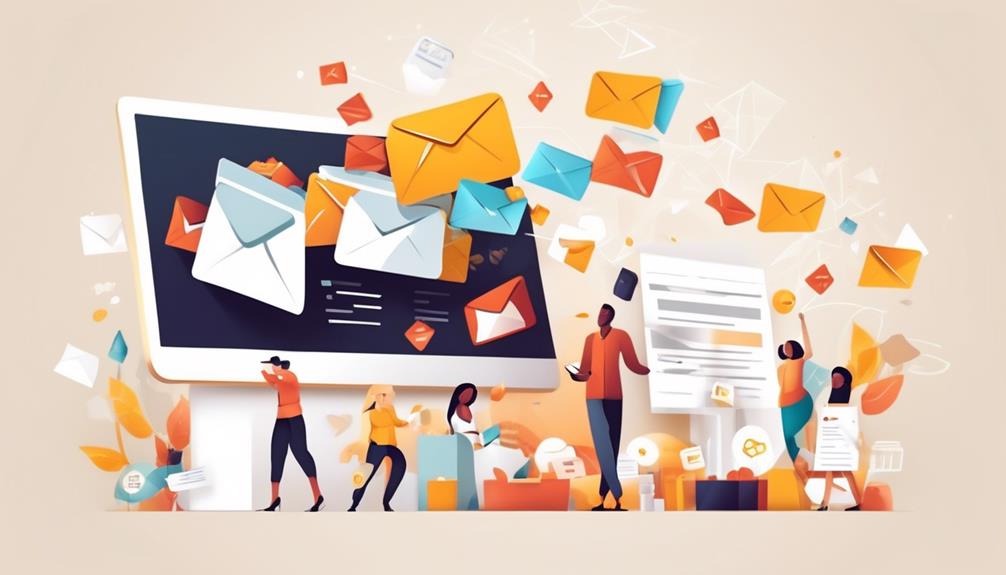
By delivering tailored and personalized content to subscribers, we cultivate stronger customer loyalty through segmented email marketing, fostering long-term relationships and repeat business.
The following facts underscore the significance of customer segmentation in driving increased customer loyalty:
- Personalized Experiences: Segmentation helps us create personalized experiences for our customers, making them feel valued and understood. This fosters a sense of loyalty and connection with our brand.
- Targeted Promotions: By segmenting our email lists, we can tailor promotions and offers specifically to the preferences and behaviors of loyal customers. This targeted approach ensures that our loyal customers receive relevant and enticing offers, further solidifying their loyalty.
- Enhanced Customer Experiences: Customer segmentation allows us to understand the unique needs and preferences of different customer segments. By catering to these specific needs, we can enhance the overall customer experience, leading to increased loyalty and satisfaction.
- Improved Customer Retention: Through targeted and personalized communication, segmentation contributes to improved customer retention. Loyal customers who feel understood and appreciated are more likely to continue doing business with us over the long term.
These insights highlight how customer segmentation is instrumental in fostering increased customer loyalty and long-term relationships.
Targeted Promotions

Segmented email marketing allows us to tailor promotions and offers to specific customer segments, delivering personalized and relevant content to drive higher engagement and conversions. By segmenting your email list, you can strategically target promotions to different customer groups based on their interests, behaviors, or other criteria. This targeted approach increases the likelihood of conversions and sales by providing relevant content to specific customer segments. It's important to understand the unique preferences and needs of each segment to create promotions that resonate with them. For instance, loyal customers identified through segmentation can receive special promotions, fostering increased customer loyalty and revenue. To illustrate the impact of targeted promotions, consider the following table:
| Customer Segment | Targeted Promotion | Result |
|---|---|---|
| Loyal Customers | Exclusive offers and rewards | Increased customer loyalty |
| New Subscribers | Welcome discounts and onboarding tips | Higher conversion rates |
| Inactive Customers | Re-engagement incentives | Improved engagement |
| High-Spending | VIP access and personalized rewards | Increased average order value |
Segmenting your email list empowers you to optimize promotional strategies and achieve better results by tailoring offers to different customer segments.
Better Understanding of Customer Behavior

By understanding customer behavior through segmentation, we gain valuable insights that enable us to create more personalized and relevant content.
This, in turn, allows for tailored subject lines that are more likely to be opened by specific demographics or individuals.
Monitoring subscribers' behavior and engagement not only improves campaign efficiency but also helps us understand their preferences, leading to more effective targeting and personalized communication.
Behavior Insights
Gaining deep insights into customer behavior is a pivotal advantage of email segmentation in driving personalized and targeted marketing strategies. By utilizing behavior insights for segmentation, we can effectively understand and cater to the diverse needs and preferences of our customer base.
Here's why behavior insights are crucial:
- Segmentation is the process: It allows us to categorize customers based on their actions and interactions with our emails.
- Personalized content delivery: Tailoring campaigns to specific interests and needs increases engagement and conversion rates.
- Refining and optimizing strategies: Monitoring behavior and engagement helps in continuously improving campaign effectiveness.
- Engage with your content: Understanding customer behavior enables us to create dynamic and relevant content, resulting in higher open and click-through rates.
Behavior insights drive the development of personalized and targeted email campaigns, ultimately enhancing the overall customer experience.
Targeted Marketing
Utilizing behavior insights to drive targeted marketing strategies allows us to leverage our understanding of customer preferences and engagement patterns, ultimately enhancing the effectiveness of our email campaigns. By implementing targeted email list segmentation, we can deliver more personalized and relevant content to our subscribers. This approach results in better campaign performance, improved deliverability, and targeted promotions, ultimately leading to an enhanced customer experience. Segmenting email lists also provides valuable insights into customer behavior, enabling us to create campaigns and content that efficiently engage and resonate with the audience. The table below highlights the key benefits of targeted marketing through email list segmentation.
| Benefits | Description |
|---|---|
| Better campaign performance | Increased open rates, clicks, and conversions due to tailored content. |
| Improved deliverability | Helps improve sender reputation, leading to better email deliverability. |
| Targeted promotions | Allows for sending specific promotions to different segments based on their interests or behaviors. |
| Enhanced customer experience | Tailors content to guide subscribers through the customer journey, improving their experience. |
| Understanding customer behavior | Monitors and understands subscriber behavior, enabling the creation of resonating campaigns and content. |
Personalized Communication
Understanding customer behavior through personalized communication segmentation allows for targeted and resonating content and messaging that enhances the effectiveness of email marketing campaigns.
By segmenting your list based on customer behavior and preferences, you can create more personalized and relevant email content. This personalized approach leads to higher engagement and conversion rates.
Analyzing customer behavior enables the sending of targeted promotions and offers, increasing the likelihood of conversions. Additionally, segmentation helps in monitoring subscribers, allowing for a personalized and customer-centric approach to email marketing.
As a result, personalized communication based on customer behavior leads to improved customer experience and stronger customer loyalty, ultimately driving the success of email marketing efforts.
Improved Return on Investment (ROI)
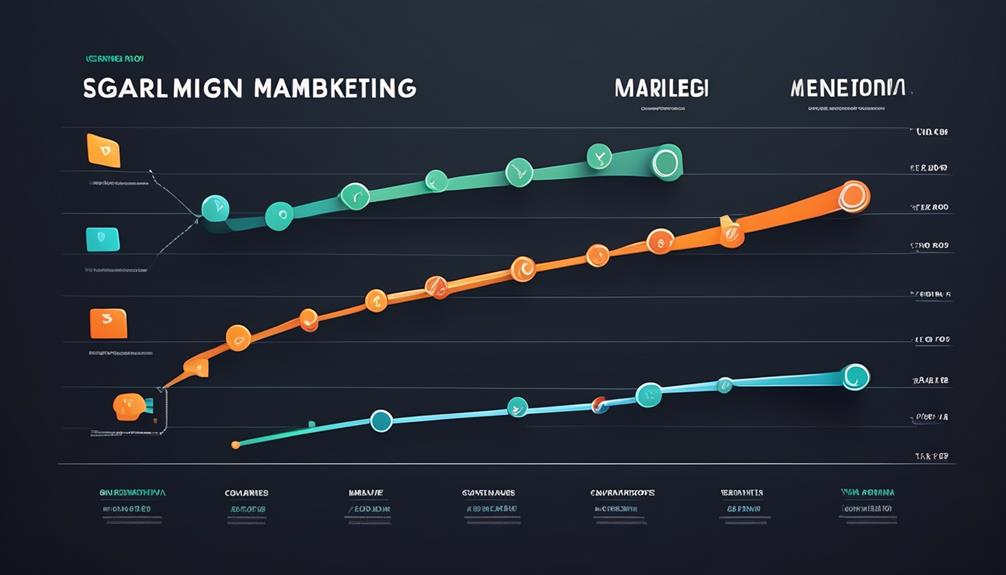
How can customer segmentation in email marketing lead to a significant improvement in Return on Investment (ROI)? By implementing customer segmentation in email marketing, businesses can experience an enhanced ROI through targeted promotions and increased customer engagement. Segmented email campaigns have been shown to result in higher open and click-through rates, ultimately contributing to an improved ROI. Additionally, email segmentation allows for personalized and relevant content, which in turn drives higher conversions and sales. Targeted emails based on segmentation also lead to better customer retention and increased lifetime value, ultimately boosting ROI. By focusing on customer segments with higher potential, email segmentation optimizes resources and maximizes ROI. To further illustrate the impact of customer segmentation on ROI, consider the following table:
| Benefits of Customer Segmentation in Email Marketing |
|---|
| Higher open and click-through rates |
| Personalized and relevant content |
| Better customer retention and increased lifetime value |
| Optimized resources and maximized ROI |
Enhanced Brand Reputation

By leveraging customer segmentation in email marketing, companies can strategically enhance their brand reputation through tailored and relevant content delivery. This approach allows for the delivery of more valuable and engaging content to subscribers, contributing to an enhanced brand image and reputation.
Here's how targeted email campaigns can significantly improve brand reputation:
- Demonstrating Understanding: Segmentation enables brands to demonstrate an understanding of customer needs and preferences, showing that the company is attentive and customer-centric.
- Personalized Communication: Targeted and personalized emails resulting from segmentation efforts can enhance brand perception, positioning the company as attentive to individual preferences, thus fostering trust and loyalty.
- Valuable Content Delivery: Segmentation allows for the delivery of more valuable and engaging content to subscribers, contributing to an enhanced brand image and reputation.
- Relevant Offerings: By leveraging segmentation to send targeted promotions and offers, brands can build a reputation for providing relevant and beneficial communications, further enhancing brand perception.
Frequently Asked Questions
Why Is Segmentation Important in Email Marketing?
Segmentation is important in email marketing because it allows us to tailor our messages to specific customer groups, increasing relevance and engagement. This targeted approach leads to higher open and click-through rates, improving overall campaign performance.
What Are the Benefits of Customer Segmentation?
Customer segmentation offers numerous benefits.
It improves campaign performance, increases deliverability, and enhances promotions. By targeting specific users with relevant content, we see higher open and click-through rates.
This approach also allows for more personalized and relevant messages, ultimately improving customer experience. Moreover, segmentation helps prevent unsubscribing due to excessive emails.
What Is the Biggest Advantage of Email Marketing?
The biggest advantage of email marketing is its ability to effectively target and engage customers. Segmentation allows us to tailor content to specific customer interests, leading to increased open rates, clicks, and conversions.
This personalized approach not only improves campaign performance and deliverability but also enhances the overall customer experience. By providing relevant and engaging content, email segmentation fosters customer loyalty and retention, ultimately driving sales and ROI.
What Are the 4 Benefits of Market Segmentation?
Segmentation offers several key benefits, including:
- Improved campaign performance
- Enhanced deliverability
- Targeted promotions
- A better customer experience
By tailoring content to specific segments, we see increased open rates, clicks, and conversions. Additionally, this approach helps improve sender reputation and deliverability.
Targeted promotions based on interests and behaviors lead to more effective marketing, ultimately boosting ROI.
– What Are the Key Advantages of Customer Segmentation Email Marketing?
Customer segmentation in email marketing is highly beneficial for businesses. By dividing your email list into targeted groups, you can personalize your messages and deliver content that is more relevant to each segment. This can lead to higher open rates, click-through rates, and ultimately, increased sales and customer satisfaction.
Conclusion
In conclusion, customer segmentation email marketing offers a range of benefits. These benefits include increased open rates and customer engagement, as well as higher conversions and enhanced brand reputation. By leveraging customer data and tailoring content to individual preferences, businesses can optimize their promotional strategies and improve their return on investment. This strategic approach to email marketing is essential for driving results and staying ahead in today's competitive market.
Bryn – AI Expert Writer Bryn is the wizard of words and AI at Influenctor. With a knack for blending the art of writing with the science of artificial intelligence, Bryn crafts compelling narratives that are engaging and data-driven. Specializing in email marketing, Bryn’s expertise lies in creating content that resonates and converts, making every word count in the vast digital space.
Segmented Email Campaigns
What Makes Customer Segmentation Email Marketing So Effective?
Just how powerful is customer segmentation in email marketing? This article explores the key factors that contribute to its effectiveness and how they can impact your email marketing efforts.

We understand that adding customer segmentation to your email marketing strategy may seem like a daunting task, requiring extra time and resources.
However, the truth is that customer segmentation is so effective because it enables businesses to deliver personalized and relevant content to their subscribers, ultimately leading to higher engagement and conversions.
But what specific strategies and tools make customer segmentation in email marketing so powerful?
Let's explore the key factors that contribute to its effectiveness and how they can impact your email marketing efforts.
Key Takeaways
- Customer segmentation in email marketing leads to increased open rates and click-through rates, improved conversion rates and ROI, and a decreased number of unsubscribers.
- Targeted emailing is important for improved relevance of content, enhanced ROI, more effective use of resources, higher open and click-through rates, and increased customer satisfaction.
- Email segmentation enhances campaign performance by tailoring content to each segment's needs and behaviors, resulting in higher engagement rates, better open and click-through rates, reduced unsubscribes, and increased conversions and revenue.
- Customer segmentation in email marketing improves the overall customer experience by providing personalized content and targeted communication, fostering long-term engagement and loyalty, and avoiding generic content. Additionally, it increases return on investment by boosting email engagement, leveraging segmentation capabilities for personalized experiences, and collecting and analyzing data for tailored content.
Benefits of Customer Segmentation
We have observed that customer segmentation offers a range of compelling benefits for email marketing.
By segmenting customers based on data, email marketing strategies can see increased open rates and click-through rates. This targeted approach ensures that customers receive content relevant to their needs and interests, resulting in improved conversion rates and ROI.
Furthermore, customer segmentation decreases the number of unsubscribers, as customers are less likely to opt out when receiving personalized content. The enhanced customer experience through personalized content also fosters loyalty and satisfaction, ultimately benefiting the brand's reputation.
Moreover, targeted promotions based on segmentation lead to better campaign performance, as they're more likely to resonate with specific customer segments, driving higher engagement and conversions.
Importance of Targeted Emailing

The importance of targeted emailing lies in its ability to deliver personalized and relevant content to specific customer segments, driving higher engagement and ultimately improving key email marketing metrics. When considering the importance of targeted emailing, it's essential to recognize the impact it can have on the success of email marketing campaigns.
Here are a couple of reasons why targeted emailing is crucial:
- Improved Relevance: Segmenting your audience allows for the delivery of content that's tailored to the specific interests, behaviors, and needs of each group, making your emails more relevant and engaging. By targeting campaigns based on demographics, preferences, behavior, location, and wishlist data, you can ensure that your emails resonate with each segment, leading to higher open and click-through rates.
- Enhanced ROI: Targeted campaigns result in more effective use of resources as they're directed towards groups most likely to respond positively. This can lead to improved customer experience and ultimately increased return on investment (ROI) for your email marketing efforts.
Segmented email marketing isn't just a strategy, but a critical component for achieving success in the saturated world of digital marketing. By recognizing the importance of targeted emailing, businesses can significantly enhance their email marketing performance.
Enhanced Campaign Performance
Recognizing the importance of targeted emailing, we can now direct our focus toward achieving Enhanced Campaign Performance through strategic email segmentation.
By tailoring content to each segment's needs and behaviors, Enhanced Campaign Performance can be achieved, resulting in higher engagement rates. This approach leads to better open and click-through rates, reduced unsubscribes, and increased conversions and revenue.
To attain Enhanced Campaign Performance, collecting and analyzing data is crucial for identifying patterns and insights to create distinct and actionable segments. This enables the creation of personalized and relevant content for subscribers, including targeted messaging and offers that speak directly to the needs and preferences of each segment.
Testing and optimizing elements such as subject lines, CTAs, and content, along with using tools like Mailchimp, HubSpot, or Constant Contact, are essential for achieving Enhanced Campaign Performance through email segmentation.
Ultimately, Enhanced Campaign Performance is about delivering the right message to the right audience at the right time, and email segmentation is the key to making this a reality.
Improved Customer Experience

Segmenting customers based on their preferences and behavior allows us to deliver personalized content and targeted communication, resulting in a more engaging and valuable experience for each individual.
By understanding the unique needs of different customer segments, businesses can ensure that their messages resonate with each recipient, ultimately leading to improved overall customer satisfaction.
Avoiding generic content and delivering timely, relevant communications not only enhances the customer journey but also fosters long-term engagement and loyalty.
Personalized Content
Utilizing personalized content based on customer segmentation criteria is fundamental in creating a tailored and customer-centric experience that leads to improved satisfaction and stronger engagement.
When segmenting customers, businesses can tailor content to individual preferences, leveraging customer data such as purchase history. This targeted approach allows for the creation and sending of highly relevant and personalized content, enhancing the effectiveness of email segmentation.
Targeted Communication
Improving customer experience through targeted communication involves delivering personalized and relevant content based on segmentation criteria, enhancing engagement, and driving customer satisfaction. By segmenting email lists, businesses can identify loyal customers and send them special offers, increasing customer loyalty and revenue. List segmentation also helps define customer personas and create content that converts them into paying customers. Moreover, segmenting based on past purchases allows for recommending similar items and sending targeted emails for replacement or renewal needs. Additionally, segmenting based on specific behavioral triggers, such as targeting customers who have abandoned their shopping carts, enables personalized emails with incentives to complete the purchase. This targeted approach not only increases open rates but also fosters a deeper connection with customers, ultimately improving the overall customer experience.
| Benefits of Targeted Communication |
|---|
| Enhanced Customer Engagement |
| Increased Customer Satisfaction |
| Improved Open Rates |
| Enhanced Customer Loyalty |
| Higher Revenue Generation |
Increased Return on Investment (ROI)
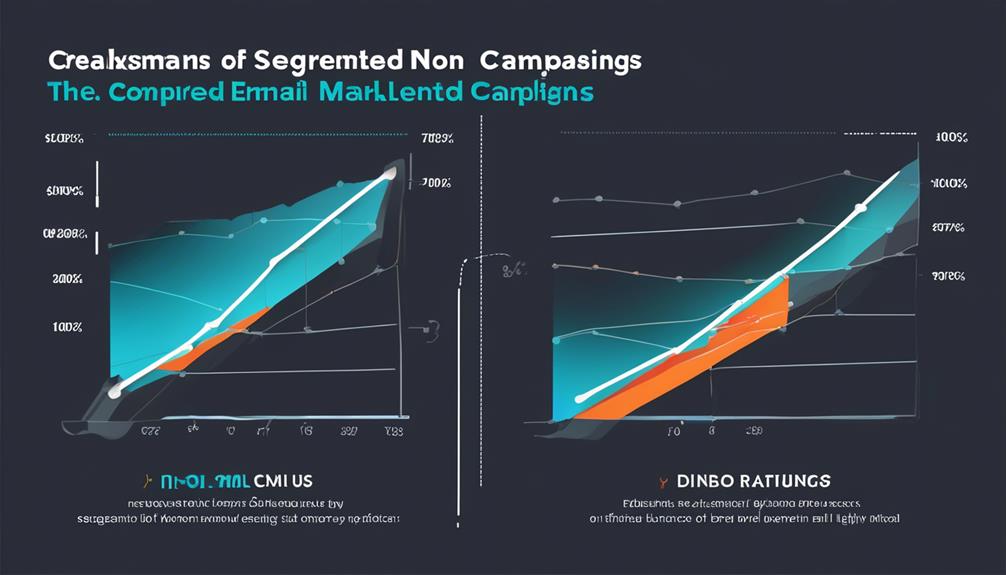
To maximize the return on investment through email marketing, targeted customer segmentation is essential for delivering compelling and relevant content to specific audience segments. When considering the increased return on investment, it becomes evident that customer segmentation plays a pivotal role in achieving this goal. We can see a significant impact on ROI through targeted campaigns and personalized experiences, achieved by leveraging segmentation capabilities.
Here's how customer segmentation directly contributes to increased return on investment:
- Targeted email campaigns result in higher email engagement, leading to increased open rates, clicks, and conversions, ultimately boosting ROI.
- List segmentation allows for collecting and analyzing data to understand customer behavior and preferences, enabling the delivery of tailored content that resonates with specific segments, thereby driving higher ROI.
Personalized Content Creation
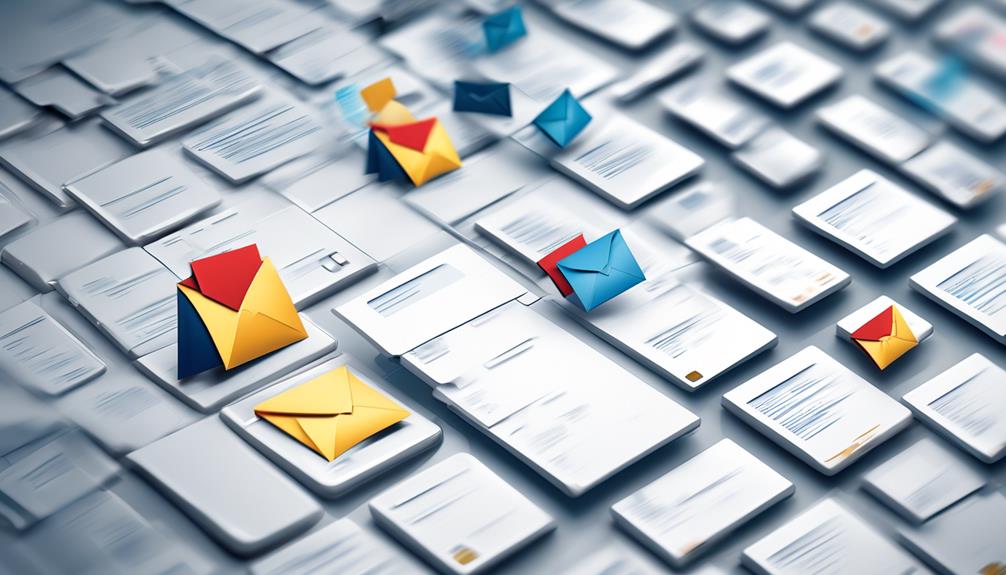
When crafting personalized content, we tailor messages and offerings to specific customer segments based on their behavior, preferences, and demographics. This segmentation is the practice of dividing your customer base into distinct groups, allowing you to create more personalized and targeted content.
By segmenting your customers, you can deliver more relevant and engaging content that speaks directly to their needs and interests. Email marketing segmentation enables businesses to use the right language and messaging, resulting in higher open rates, click-through rates, and conversions.
This approach allows for the creation of content that resonates with specific customer segments, ultimately leading to increased customer satisfaction and loyalty. Effective personalized content creation involves leveraging data insights to design and deliver content that aligns with the unique preferences and behaviors of each segment.
Effective Subject Lines and Calls-to-Action

Crafting compelling subject lines and using action-oriented language in calls to action are crucial for improving email marketing performance.
By clearly conveying the value proposition to the recipient, we can increase open and click-through rates.
Personalizing subject lines and calls to action based on segment data allows for targeted effectiveness.
A/B testing can further optimize performance.
Compelling Subject Lines
In crafting compelling subject lines for email marketing, personalization and targeted messaging are crucial to increasing engagement and prompting action from recipients.
When it comes to compelling subject lines, segmentation plays a vital role in tailoring messages to specific customer segments. This not only grabs the attention of email subscribers but also makes the content more relevant to their needs and interests.
Additionally, A/B testing subject lines can help in determining the most effective language and messaging for different customer segments, ensuring that the content resonates with each group.
Furthermore, including calls-to-action within the subject lines can influence email recipients to take the desired action, ultimately leading to improved conversion rates and enhancing the overall effectiveness of targeted emails.
Action-Oriented Language
Segmentation not only enhances the relevance of email content to specific customer segments but also provides the foundation for effective action-oriented language in subject lines and calls-to-action.
Crafting action-oriented subject lines and compelling calls-to-action is essential for driving engagement and conversions in targeted email campaigns.
By personalizing subject lines and calls-to-action based on segment data, we can resonate with recipients' specific needs and interests, increasing the likelihood of interaction.
A/B testing subject lines and calls-to-action allows us to identify the most effective language for different segments, ensuring that our messaging resonates with the audience.
Continual monitoring and adjustment of subject lines and calls-to-action based on performance data is crucial for optimizing engagement and conversion rates.
Action-oriented language tailored to specific segments can significantly impact the success of email marketing efforts.
Clear Value Proposition
Tailoring subject lines and calls-to-action to provide a clear value proposition for each customer segment is crucial for driving email engagement and conversions. Effective subject lines and calls-to-action entice recipients to open and engage with the email, significantly increasing open rates and engagement.
Personalized calls-to-action based on segment data can lead to higher click-through rates and conversions. A/B testing subject lines and calls-to-action helps identify the most effective messaging for each segment. Monitoring and adjusting strategies for subject lines and calls-to-action is crucial for ongoing optimization of email marketing campaigns.
Frequently Asked Questions
Why Is Segmenting an Effective Email Marketing Strategy?
Segmenting is an effective email marketing strategy because it allows us to tailor our content to meet the specific needs and interests of different customer segments. This targeted approach results in higher open rates, click-through rates, and conversion rates, while reducing the number of unsubscribers.
What Makes Email Marketing so Effective?
We all know the age-old struggle to grab attention in the digital world. So, what makes email marketing so effective?
It's the ability to personalize content and target specific groups. Segmentation allows us to tailor our messages, leading to higher open and click-through rates, better conversions, and reduced unsubscribers.
The data speaks for itself; segmented emails deliver results. It's the strategic edge that sets successful campaigns apart.
What Are the Benefits of Segmenting Your Email List?
Segmenting our email list offers several benefits.
It allows us to tailor our content to specific customer segments, increasing the relevance and personalization of our emails.
This, in turn, leads to higher open rates, click-through rates, and ultimately, better ROI.
How Segmentation in Marketing Can Be Effective?
Segmentation in marketing can be effective through personalized targeting, tailored content, and improved campaign performance.
By dividing recipients into smaller, targeted groups based on behavioral or demographic data, we can enhance engagement and relevance.
This method allows for the delivery of more personalized and specific content to different segments, leading to higher open rates, click-through rates, and ultimately, better conversion rates.
Such tailored approaches can significantly impact the overall success of marketing campaigns.
How Does Customer Segmentation in Email Marketing Lead to Better Results?
When it comes to improving results in email marketing, customer segmentation in email marketing is key. By categorizing your audience based on their preferences, behavior, and demographics, you can deliver more personalized and relevant content. This leads to higher engagement, improved open rates, and ultimately, better overall results for your email marketing campaigns.
Conclusion
In conclusion, customer segmentation in email marketing is a game changer for businesses. Did you know that segmented email campaigns can increase revenue by 760%?
By targeting specific customer groups with personalized content, businesses can significantly improve campaign performance and ROI. The data-driven approach of customer segmentation ensures that emails are relevant and engaging, leading to higher open and click-through rates.
It's clear that customer segmentation is a must for any successful email marketing strategy.
Bryn – AI Expert Writer Bryn is the wizard of words and AI at Influenctor. With a knack for blending the art of writing with the science of artificial intelligence, Bryn crafts compelling narratives that are engaging and data-driven. Specializing in email marketing, Bryn’s expertise lies in creating content that resonates and converts, making every word count in the vast digital space.
Segmented Email Campaigns
3 Best Strategies for Effective Email List Segmentation
Need to revolutionize your email marketing? Discover the top 3 strategies for effective email list segmentation and take your engagement to new heights.
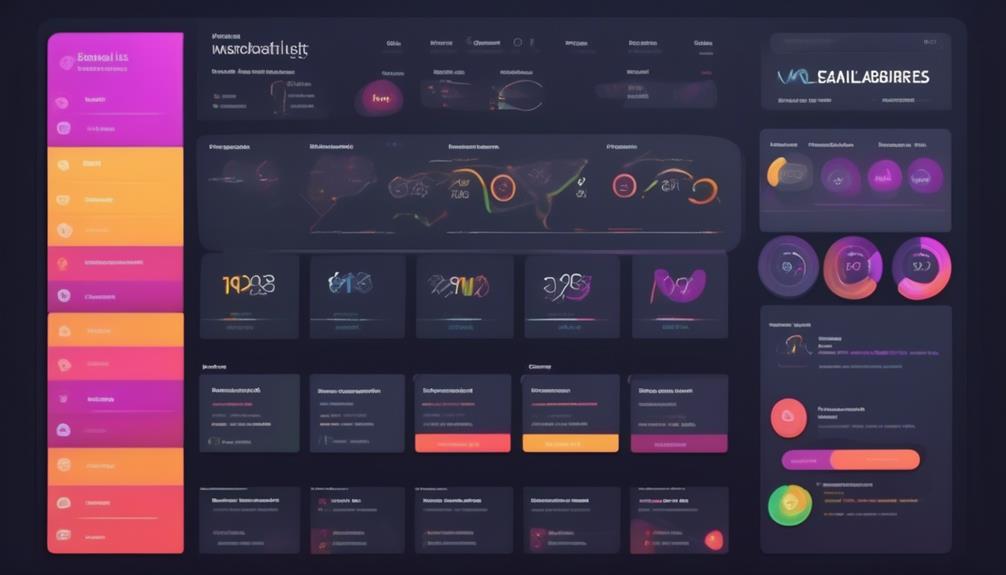
Have you ever thought about how to boost the effectiveness of your email marketing efforts? Let me tell you, the key is in properly segmenting your email list, which can result in increased engagement and better conversion rates.
But what are the three best strategies for achieving this? In this discussion, we will explore the power of:
- Demographic segmentation
- Behavioral segmentation
- Personalized content based on preferences
These strategies can revolutionize the way you connect with your audience.
So, are you ready to take your email marketing to the next level?
Key Takeaways
- Tailoring and targeting marketing efforts through email list segmentation can lead to more effective and engaging campaigns.
- Behavioral data segmentation allows for personalized content that is tailored to individual behaviors, resulting in improved engagement and conversion rates.
- Customer lifecycle segmentation helps to nurture leads, provide a seamless post-purchase experience, recognize and reward loyalty, and re-engage inactive customers.
- Effective email list segmentation enhances the overall effectiveness of email marketing initiatives, increases engagement and conversion rates, and improves customer satisfaction and loyalty.
Segmenting by Demographics
We have found that segmenting by demographics is a crucial strategy for optimizing email marketing campaigns and delivering personalized content to our diverse subscriber base.
By segmenting your list based on different customer demographics such as age, gender, location, job title, and organization type, you can create segments that allow for tailored and targeted marketing.
This method enables us to use our email list based on the unique needs and preferences of our subscribers, ensuring that the content we deliver is relevant and engaging. Segmenting by demographics is a powerful tool in our marketing arsenal, as it allows us to personalize content and offers, leading to higher engagement and increased open rates.
Furthermore, it enables us to allocate our marketing spend more effectively, resulting in an improved return on investment for our email campaigns.
Behavioral Data Segmentation
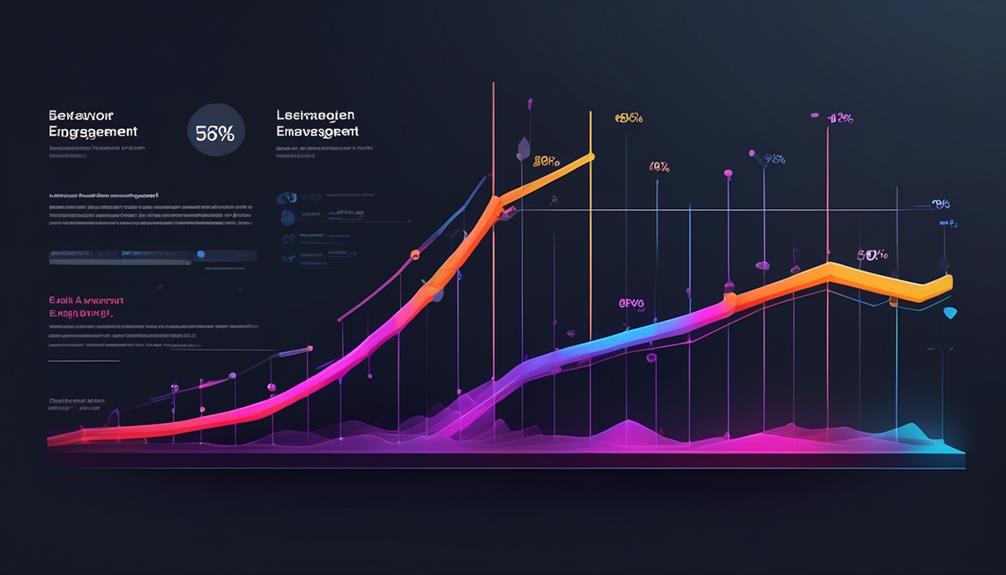
Analyzing customer behavior through data segmentation provides valuable insights for crafting personalized and targeted email content.
Behavioral data segmentation involves dividing email recipients into different segments based on their past actions and interactions, such as purchases, website visits, or engagement with previous emails. This strategy allows for the creation of specific content tailored to individual customer behaviors and preferences.
By leveraging behavioral data segmentation, marketers can send highly relevant and timely emails, resulting in improved engagement and higher conversion rates. This approach enables the delivery of tailored content and product recommendations, catering to specific preferences and interests revealed through behavioral patterns.
It's effective for nurturing leads, re-engaging inactive customers, and driving repeat purchases through targeted communication. Leveraging behavioral data segmentation in email marketing ensures that the right information reaches the right audience at the right time, maximizing the impact of email campaigns.
Incorporating this strategy into email segmentation efforts can significantly enhance the effectiveness of email marketing initiatives.
Segmentation for Customer Lifecycle
Segmenting customers based on their lifecycle stage allows for targeted and strategic email communication tailored to their specific needs and behaviors. By understanding where customers are in their journey, we can create segmented email campaigns that deliver relevant content and targeted emails, ultimately driving better engagement and conversion rates.
Here are the key stages in the customer lifecycle to consider for effective email list segmentation:
- Prospects: Target individuals who've shown initial interest in your products or services but haven't made a purchase. Provide them with educational content and special offers to nurture their interest and encourage conversion.
- First-time Buyers: Tailor emails to provide a seamless post-purchase experience, such as order confirmations, shipping updates, and product guides. Additionally, offer complementary products or services that align with their initial purchase.
- Repeat Customers: Recognize and reward loyalty through exclusive offers, sneak peeks at new products, and personalized recommendations based on their purchase history.
- Inactive Customers: Re-engage customers who haven't interacted with your brand recently by providing incentives, highlighting new offerings, or requesting feedback to understand their disengagement.
Frequently Asked Questions
What Strategies Were Employed to Segment the Email List Effectively?
We employed various strategies to segment the email list effectively.
By analyzing customer behavior and demographics, we tailored content to specific interests and needs.
Our segmentation also included past purchase history, allowing us to target relevant product recommendations.
Furthermore, we utilized engagement metrics to identify inactive subscribers and re-engage them with targeted campaigns.
These strategies resulted in higher open rates, click-through rates, and overall improved email marketing performance.
How Should I Segment My Email Lists?
We should segment our email lists based on demographic data like age, gender, location, job title, and organization type.
Additionally, behavioral data such as past purchases, website actions, wishlists, and interest data can inform targeted emails.
Implementing location-based segmentation for relevant information or deals is crucial.
We must also consider segmenting based on engagement level to personalize content according to preferences.
Utilizing email list segmentation based on past purchases and site actions can significantly improve ROI.
How Can I Improve My Email Segmentation?
To improve our email segmentation, we need to focus on:
- Personalized subject lines
- Clear calls to action
- Urgency or scarcity tactics
- Customization options
By tailoring our content to each segment, we can:
- Increase open and click-through rates
- Reduce unsubscribers
Additionally, maintaining a clean email list and monitoring deliverability metrics is crucial for successful segmentation.
These strategies will ensure that our emails are:
- Relevant
- Engaging
- Well-received by our audience.
What Is Segmentation Strategy in Email Marketing?
Segmentation strategy in email marketing involves dividing recipients into smaller, targeted groups based on specific criteria or characteristics. It allows for personalized and relevant content tailored to each segment, leading to increased engagement and conversions.
Implementing segmentation strategy is essential for precise and effective marketing, ensuring that the right message reaches the right people. The benefits of segmentation strategy include increased relevance, improved engagement rates, better conversion rates, decreased unsubscribe rates, and enhanced customer retention.
What are the main differences between the 3 best strategies and the 5 key strategies for email list segmentation?
The main differences between the 3 best strategies and the 5 key strategies for effective email list segmentation lie in their approach and scope. The top 3 strategies tend to focus on more targeted and specific segmentations, while the 5 key strategies offer a more comprehensive and diverse approach to segmentation.
Conclusion
In conclusion, effective email list segmentation is crucial for targeted marketing and improved engagement.
For example, a clothing retailer used behavioral segmentation to target customers who'd previously purchased winter coats, sending them personalized emails with recommendations for matching accessories and generating a 20% increase in sales.
By implementing demographic segmentation, behavioral data segmentation, and personalized content based on preferences, businesses can maximize the impact of their email marketing efforts and drive better results.
Bryn – AI Expert Writer Bryn is the wizard of words and AI at Influenctor. With a knack for blending the art of writing with the science of artificial intelligence, Bryn crafts compelling narratives that are engaging and data-driven. Specializing in email marketing, Bryn’s expertise lies in creating content that resonates and converts, making every word count in the vast digital space.
-

 Email Marketing Tools and Techniques1 month ago
Email Marketing Tools and Techniques1 month agoHow to Export Mailchimp Contacts
-

 How to Write Email2 months ago
How to Write Email2 months agoHow to Write Negative Feedback Email: Sample Guide
-

 Email Automation3 months ago
Email Automation3 months agoAutomated Email Marketing 101: A Beginner's Tutorial
-

 Marketing Strategy3 weeks ago
Marketing Strategy3 weeks agoHow to Make an Offer So Good That Customers Can’t Resist!
-

 Email Warmup3 weeks ago
Email Warmup3 weeks agoWarm Follow-Up Email
-
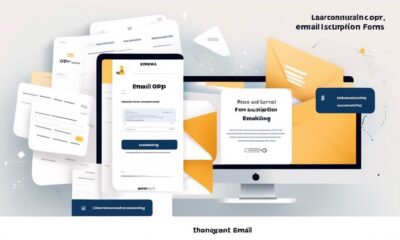
 GDPR Email Marketing4 weeks ago
GDPR Email Marketing4 weeks agoGDPR Email Marketing: Consent Examples Guide
-

 Email Design Hub1 month ago
Email Design Hub1 month ago3 Essential Tools for Email Marketing Design Success
-

 Email Marketing1 day ago
Email Marketing1 day agoWhat Is Email Marketing Advantages and Disadvantages



















